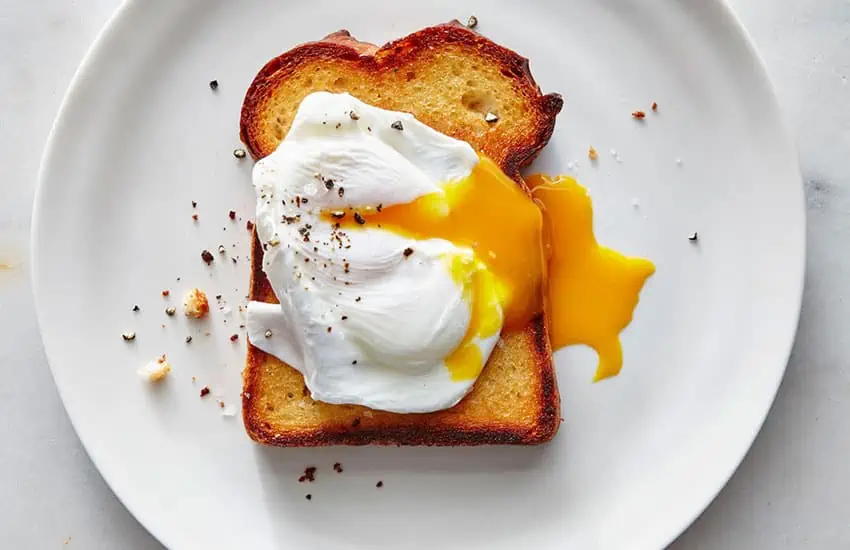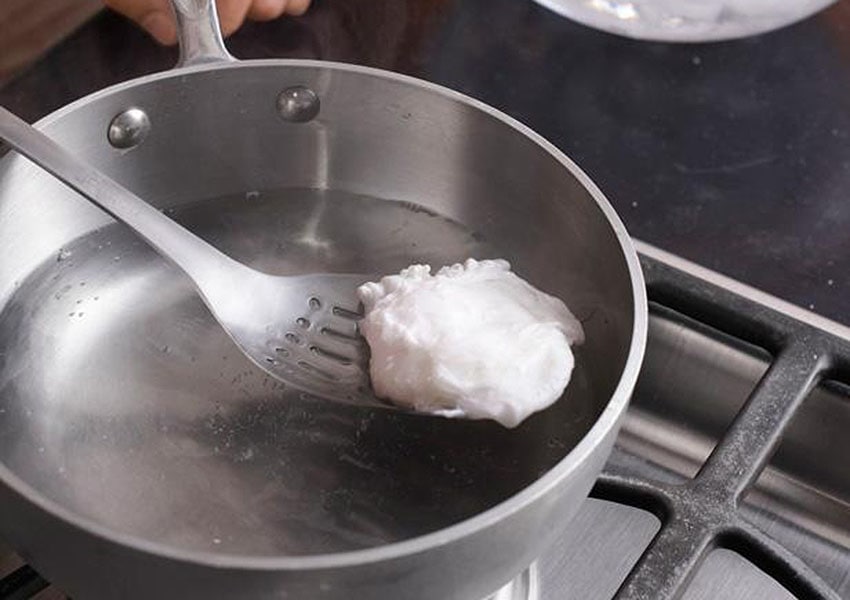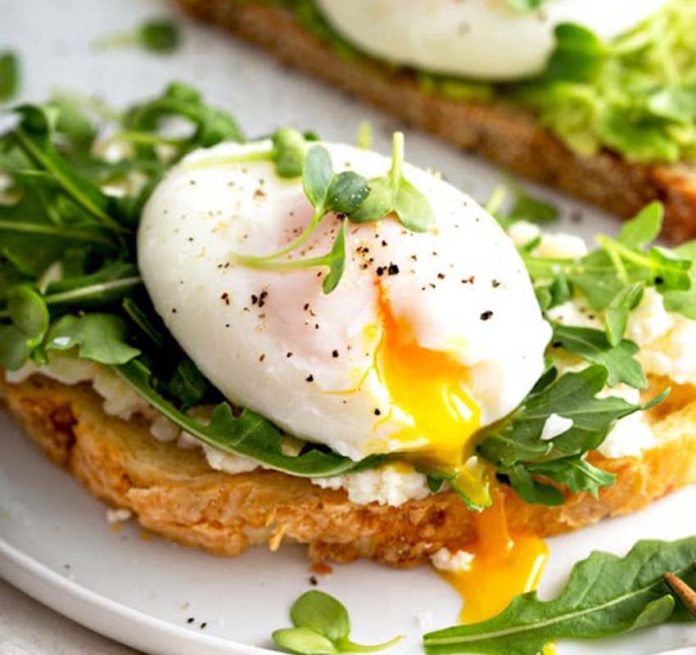Put away the vinegar. Forget about plastic wrap and special pans.
You can make perfect poached eggs — huevos poché in Spanish — every time, and I’m going to tell you how. It’s not as hard as you think once you understand what it is you’re trying to do; that was the “aha!” moment for me.
Here’s the secret: you want to poach the eggs, not boil them. “Poaching” means the water is gently simmering at a “constant and moderate temperature.” If you’re a stickler for detail, that means between 160 F–180 F (71 C–82 C). If the water is boiling, the eggs will have a hard (if not impossible) time staying together. Stringy white shreds will go bubbling around the pan as the egg tumbles in the too-hot water.

Tip 2: you want to crack the eggs into small bowls or ramekins before carefully sliding them into the simmering water in one fluid pour.
Is this an unnecessary pain in the neck? Not really. Consider this step an essential part of making beautifully poached eggs. Why? Cracking directly into the water allows the egg whites to fan out wildly from the yolk — not the look you’re going for. There’s also a high probability the yolk will sink to the bottom of the pan, where it will either stick to the hot surface or cook too hard, too fast.
And finally, the yolk could break, ruining the possibility of the softly delicious egg you’re trying to make. Think of this as a small step that makes a big difference.
You also want the freshest eggs you can find. If you have a source, huevos del rancho will probably be the best; ask at your local mercado if there’s someone who sells this type of egg from free-range chickens. Otherwise, just get the freshest you can; and brown eggs have more flavor. Yolks should be dark orangey-yellow and round up from the white.
Finally, you should use a timer: two minutes for soft poached eggs, up to four minutes for more firm. Can you wing it? Yes. Will your eggs be perfectly poached? Maybe.
One of the first columns I wrote for Mexico News Daily was about eggs, and I included one of my favorite recipes, huevos ahogados. It‘s basically eggs poached in warm salsa Mexicana.
The directions call for dropping the eggs into the boiling broth, which works in that case because there are so many other ingredients (onions, tomatoes, jalapeños, cilantro) that kind of protect the eggs from the boiling motion of the liquid.
Whether you like them British-style, on toast with salt and pepper or as the best part of classic Eggs Benedict, poached eggs are delicious and can make the simplest breakfast feel extra-special.

Perfect Poached Eggs
- Eggs
- Water
- Salt and pepper
- Optional: microgreens, minced fresh cilantro or parsley for garnish
Fill a wide saucepan half-full of gently salted water. Over medium heat, bring to a gentle simmer. That means there are tiny bubbles (kind of like champagne, but not as many) rising to the surface or along the bottom of the pan.
While you’re waiting for the water to heat, crack the eggs into individual ramekins or small cups. Once the water is simmering, pour each egg gently into the water in one fluid motion. (Don’t worry if the edges look a bit messy.) No need to stir.
Using a timer? For soft poached eggs, cook for two minutes. If you like firmer yolks, cook for up to 4 minutes. You’ll be able to sense when the eggs are cooked the way you like them after you’ve done this a few times. (I still use a timer just to be sure.)
Until then, to check doneness, remove one carefully with a slotted spoon and touch it gently with your fingertip or the edge of a teaspoon. You’ll be able to gauge the softness by how it feels. If you want the eggs firmer, it’s OK to put them back into the water for another 30–60 seconds.
Once the eggs are ready, remove them carefully, one at a time, with a slotted spoon. Let each one drip-dry a little before placing on toast.
Sprinkle with salt and fresh ground black pepper. If you like, garnish with microgreens or fresh minced herbs.
Janet Blaser is the author of the best-selling book, Why We Left: An Anthology of American Women Expats, featured on CNBC and MarketWatch. She has lived in Mexico since 2006. You can find her on Facebook.
